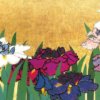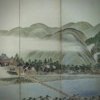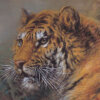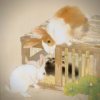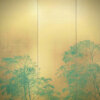Kawamura Manshū: Master of Landscape Paintings Full of Poetic Imagination
Kawamura Manshū was a Japanese painter who lived from the Meiji era to the early Shōwa era. He studied under Yamamura Shunkyo who was one of the two greatest authorities in the modern painting world in Kyoto together with Takeuchi Seihō and active as a leading painter in the Kansai painting world as he awarded the special prizes in series at Bunten (Publicly offered art exhibition sponsored by the government). While he worked on sketching basically, he became famous with landscape paintings full of poetic imagination adding the sophisticated sensibility, which makes his works only to focus on drawing nature worth seeing. Here are some accounts for “Koto no Haru (Spring Scene in Ancient Capital)” in his works as follows.
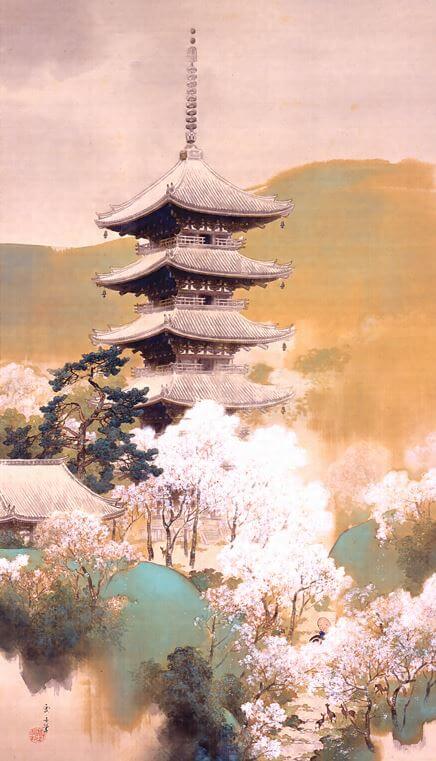
This piece of work was exhibited at the 12th Bunen in 1918. Kawamura Manshū awarded the special prize with “Chikubushima (Chikubushima Island)” at the Bunten in 1916 and the same went for “Nihon Sankei (the Three Views of Japan)” in the next year. In other words, the piece of work was put out in the timing when he got into the best swing of his painting works. The beautiful cherry blossoms drawn from the front of the canvas to the center as they were spilled out should be just like a great painter that he is. It is said that Manshū did not behave as a painter to express the landscapes but a writer to record them whenever he worked on the landscape paintings toward nature. The behavior that he tried to convey the eternally beautiful scenery of the spring in the ancient capital, Nara without any crooked tinkers as his own task, is really expressed in the work. The technique to convey the large scales of the cherry blossoms, temple, and mountains clearly to the viewers by drawing a deer small in the near view on the canvas, is interesting.

